Metabolic Effects of Preventative Antimicrobial Therapy
Diarrhea, or scours, remains the most common cause of illness and death in pre-weaned bottle-fed calves. It is estimated that scours account for over half of reported illness and one-third of the deaths in calves raised in this manner.
Traditionally, antimicrobials have been used to prevent and treat scours. It is estimated that 75% of bottle-raised calves are treated with antimicrobials in the United States and 30% in Canada.
Prophylactic Use of Antimicrobials
Prophylactic, or preventative use, of antimicrobials is commonplace in many calf rearing programs. USDA data from 2018 reported 40% of dairy operations still relying on antimicrobials to manage disease. However, the low efficacy of this practice to prevent disease and additional concerns concerning antimicrobial resistance have called for evaluation of this practice.
A study conducted by Buss et al., 2021 demonstrated that although prophylactic dosing of neomycin in milk preweaning resulted in a small reduction in fecal scores, it did not reduce incidence of diarrhea or respiratory disease and did not result in improved animal performance.
Microbiome, Immune Development, and Animal Performance
Animals undergo a series of developmental adaptations after birth. Microbes acquired by the animal from the environment help stimulate intestinal and immune development. Changes to this developing microbiome caused by environmental factors, like antimicrobial use, can have lasting impacts on health and productivity of the animal.
Epidemiological data suggests that antimicrobial treatment preweaning is correlated with:
- Lower performance.
- Increased disease incidence later in life.
- Lower conception rates.
- Increased time to first calving.
- Increased risk of leaving the herd earlier due to health events.
- Reduce milk production during the first lactation.
Effect of Neomycin on Intestinal Function and Systemic Metabolism
A recently published article from the University of Guelph evaluated the impact that prophylactic feeding of neomycin on intestinal microbiota, bile acid (BA) metabolism, and gene expression related to immunity and energy metabolism.
Calves were divided into 3 groups and were harvested at ±29 days of age to allow for collection of tissue and digesta sample from the gastrointestinal tract.
Group 1: Control (CTL), which was given no neomycin.
Group 2: Short Term (ST), calves given 20 mg/kg of BW neomycin for 14 days.
Group 3: Long Term (LT), calves given 20 mg/kg of BW neomycin for 28 days.
Key Findings
- Neomycin use reduced microbial diversity and resulted in a reduction of Lactobacillus and Bifidobacterium.
- ST use of neomycin had a limited impact on these bacterial communities, suggesting that after ceasing neomycin administration, microbial abundance began to recover.
- Increased uptake of BA in the ileum of both ST and LT groups compared to CTL.
- Suggests that neomycin induced changes in the abundance of BA metabolizing bacteria.
- BA serve as metabolic integrators and relay information from the intestinal milieu to peripheral tissues and expression of downstream genes involved in energy metabolism and immune function.
- Changes in microbial diversity and composition resulted in changes in the BA profile and affected their intestinal reuptake.
- The increase in BA reuptake changed the expression of genes responsible for BA synthesis and transport in the liver.
- Although ST calves were not receiving neomycin at the time of slaughter (day 28), they still showed alterations in BA concentrations along with changes in gene expression involved in BA metabolism in the ileum, liver, and peripheral tissues.
- Extent of changes observed were greater for the ST group than the LT group.
- These findings suggest that antimicrobial dosing led to changes in BA and metabolic function that persisted even after neomycin administration was discontinued.
This study demonstrated that the prophylactic (preventative) administration of neomycin resulted in changes in BA metabolism by changing its profile and tissue distribution. Proposing that a possible link between dysregulated BA profile and tissue distribution, with changes in genes related to lipid metabolism, immune activation, and inflammation in adipose tissue and in the liver.
If you are currently feeding neomycin, you might be considering pulling it given the results of this study. Remember that data collected from your own farm should drive every decision that you make on your own farm.
If you have chosen to feed neomycin due to a well-documented improvement in animal health and performance, then you may still consider keeping it in your feeding program. If your decision to feed neomycin is based more upon observation or feeling, then it may be useful to reevaluate your decision.
Many calf hood pathogens are not very responsive to antibiotic therapies. New technologies in antibody and immunomodulatory therapies are effective alternatives to antimicrobial use. Determine what challenges you are dealing with and then choose a plan of attack. Keep good health and performance records so that you can validate the effectiveness of your decisions.
Written by: Mariah Gull, M.S.
Sources:
Abuelo, A. et al., (2021)
Aghakeshmiri, F. et al., (2004)
Cangiano, L.R. et al., (2023)
Heinrichs, A. J., and Heinrichs, B.S. (2011)
Svensson, C. and Hultgren, J. (2008)
Urie, N. J. et al., (2018).
Winder, C.B. et al., (2018)
Canadian National Dairy Study: Heifer calf management - ScienceDirect
Windeyer, M.C. et al., (2014)
Uyama, T. et al., (2022)
